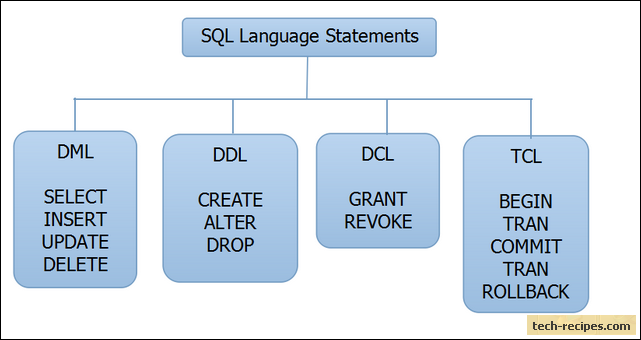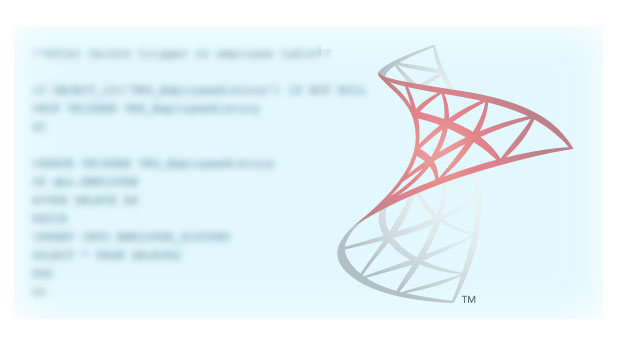SQL language is divided into four types of primary language statements: DML, DDL, DCL and TCL. Using these statements, we can define the structure of a database by creating and altering database objects, and we can manipulate data in a table through updates or deletions. We also can control which user can read/write data or manage transactions to create a single unit of work.
The four main categories of SQL statements are as follows:
1. DML (Data Manipulation Language)
2. DDL (Data Definition Language)
3. DCL (Data Control Language)
4. TCL (Transaction Control Language)

DML (Data Manipulation Language)
DML statements affect records in a table. These are basic operations we perform on data such as selecting a few records from a table, inserting new records, deleting unnecessary records, and updating/modifying existing records.
DML statements include the following:
SELECT – select records from a table
INSERT – insert new records
UPDATE – update/Modify existing records
DELETE – delete existing records
DDL (Data Definition Language)
DDL statements are used to alter/modify a database or table structure and schema. These statements handle the design and storage of database objects.
CREATE – create a new Table, database, schema
ALTER – alter existing table, column description
DROP – delete existing objects from database
DCL (Data Control Language)
DCL statements control the level of access that users have on database objects.
GRANT – allows users to read/write on certain database objects
REVOKE – keeps users from read/write permission on database objects
TCL (Transaction Control Language)
TCL statements allow you to control and manage transactions to maintain the integrity of data within SQL statements.
BEGIN Transaction – opens a transaction
COMMIT Transaction – commits a transaction
ROLLBACK Transaction – ROLLBACK a transaction in case of any error

